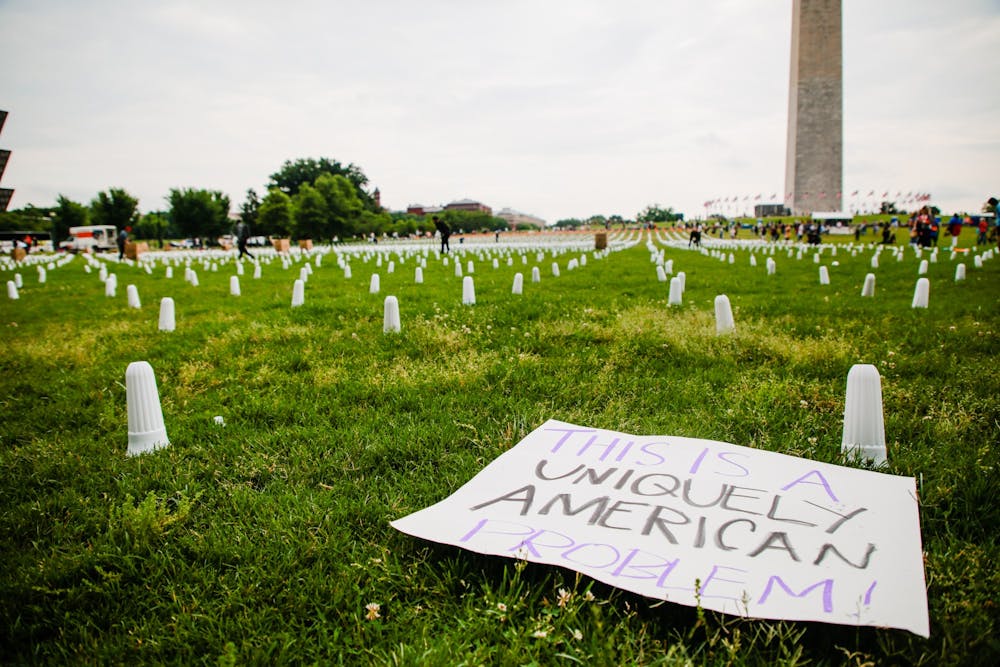I see Adam, a 10-year-old stranger, in a random apartment building on the Benjamin Franklin Parkway. His head rests in his hands, his feet shake, and his voice whimpers. As an unsettling bombardment of fireworks and gunshots fire 50 feet away from us, I walk up to him, and he looks up to me. The words barely tumble out of his mouth, the shock still placed on his young shoulders as he says to me, a near stranger, “I want to go home. I want my brother.”
There was an active shooter less than a three minute walk from where we were. Adam’s parents weren’t answering his calls and he couldn’t find his brother. They, like my friend group and many others, fled from the Philadelphia Museum of Art and were separated when shots were fired nearby around 9:47 p.m. on Monday night. A few gun shots had punctured the blissful festivities of July 4, causing a blend of fear, adrenaline, and anxiety to gush out, all of which twisted through Adam.
Despite the chaos, the national media has scarcely reported on the shooting in Philadelphia as it does not qualify as a mass shooting. Therein lies the problem: while a disturbing epidemic, mass shootings account for a sliver of a fraction of a minority of gun deaths in the United States. The larger issue, the one rarely focused on, are daily shootings like the one in Philadelphia where “only” a few people are injured or killed. The majority of gun murders result from handguns, and, despite public outcry, just 3% from assault rifles. Moreover, to date in 2022, over 22,000 people have died as a result of non-mass shooting gun deaths compared with the 340 people murdered as a result of mass shootings.
These statistics paint an explicit picture: the United States has a gun problem predominantly centered on one-off murders and handguns, not on mass shootings and AR-15s. Maps displaying mass shootings are shocking; maps showing the number of deaths from all shootings appalling. Solving the mass shooting epidemic must go hand in hand with everyday gun violence. This isn’t to diminish the atrocity of a mass shooting, but to point out that, unfortunately, there exists much more that is wrong in our country and much more that we can do about it.
Philadelphia is a prime example of the issues with everyday gun violence as 2021 was the deadliest year on record for homicides in the city, and this year, people are being shot at a record pace. In mid-June, a lawyer was shot dead on Penn’s campus at 38th and Spruce streets, and on May 30, a father and his 9-year-old son were killed in Philadelphia driving home from a Memorial Day barbecue. The shooting on July 4 painted an even clearer indictment of the mass of shootings, and not just mass shootings, plaguing the United States. These events, unfortunately, have led to hundreds of Adams throughout the United States. Clearly, something must change.
Solving this larger gun problem first requires a cultural shift by the media, politicians, and everyday individuals to focus on mass shootings as well as other gun violence.
One institutional-based idea is to establish community-based gun buyback programs, creating a balance between respecting gun rights and discouraging gun violence. The appeal of gun buyback programs lies in their ability to simultaneously reduce the amount of guns in a community, provide a method to safely dispose of firearms, and, importantly, to lead to a cultural shift away from guns.
The need for a solution became painstakingly clear when I woke up the morning after the Fourth of July to a phone call from an unknown number. The voice on the other line sounded young and shy, no more than six years old. He said to me, “Hi, I am Adam’s brother. Thank you for helping him get home safe.” He hung up before I could reply, the static of the now-empty airwaves leaving an eerie silence.
While I was thankful that Adam and his brother were home safe, I couldn’t help but replay Adam’s fearful words from the building lobby I had found him in just a few hours earlier.
“Why is this happening? Is it safe to leave now?”
DANIEL GUREVITCH is a rising College junior from Wynnewood, Pa. studying political science and psychology. His email is dgure@sas.upenn.edu.









